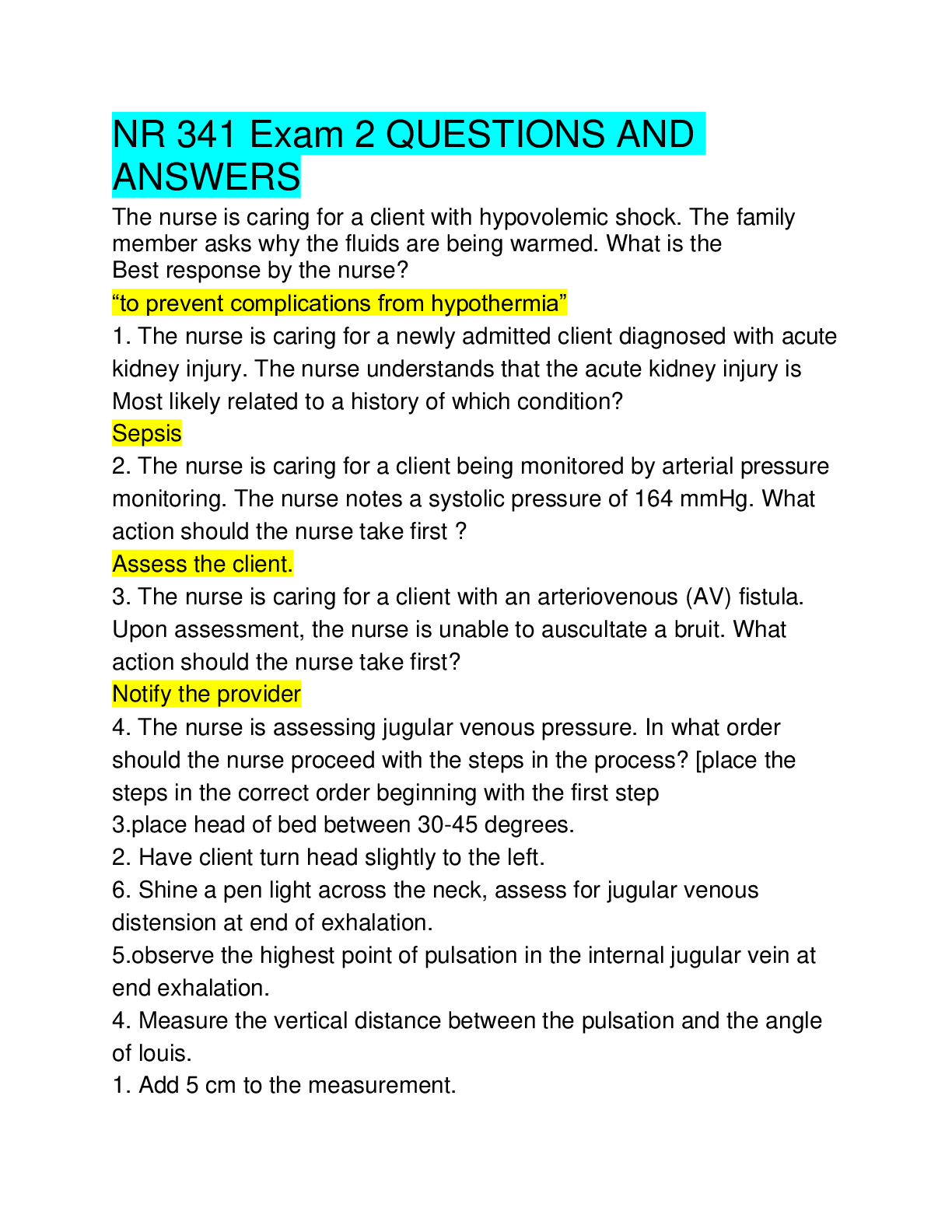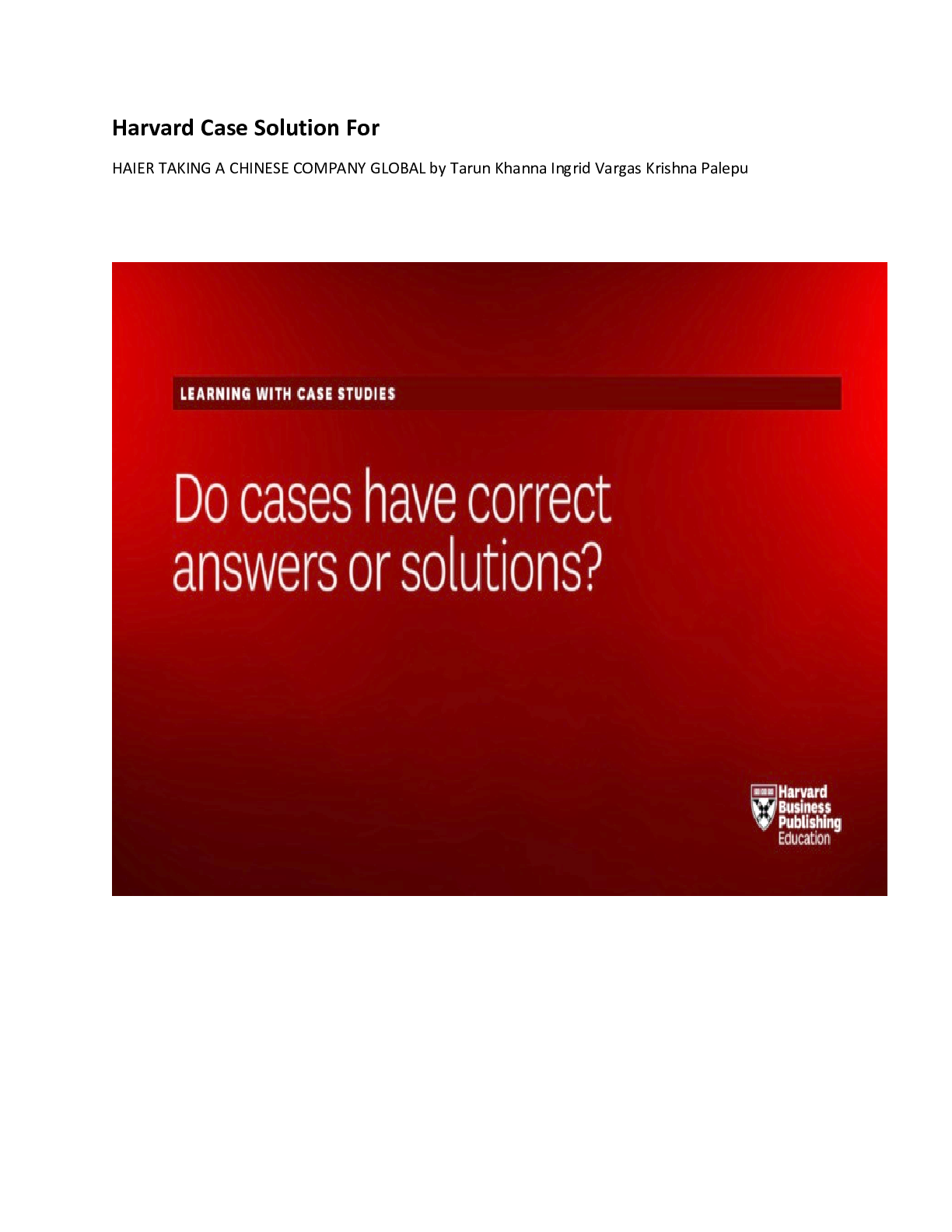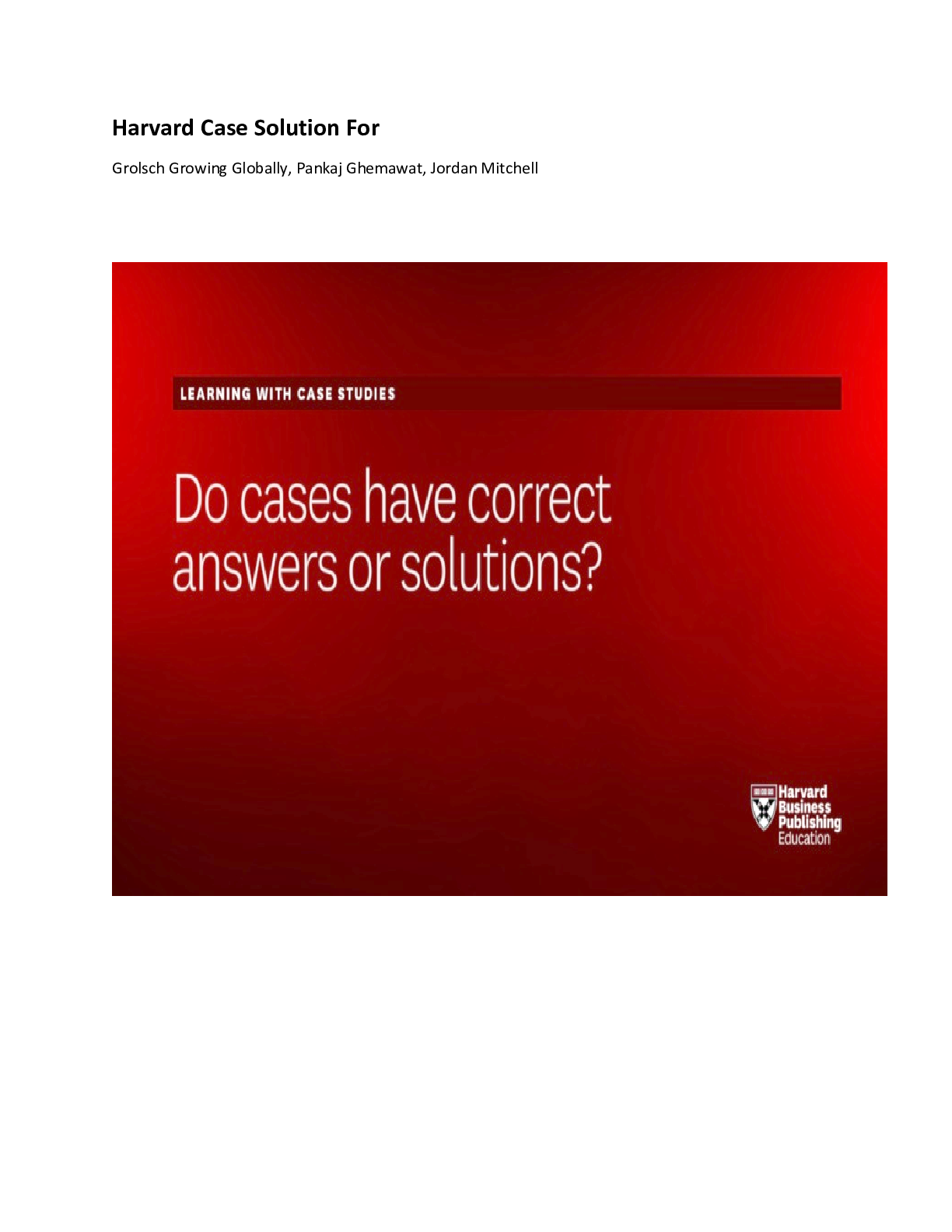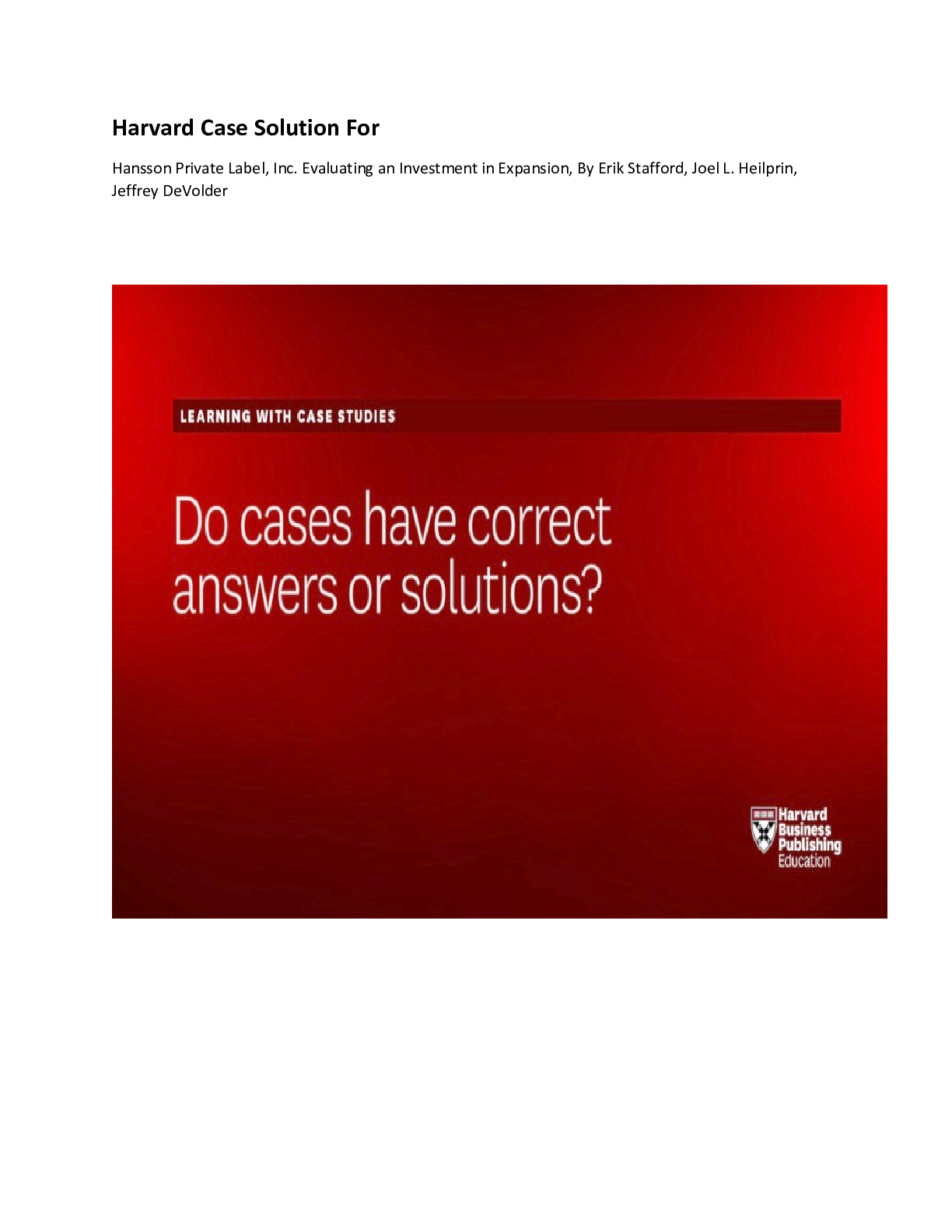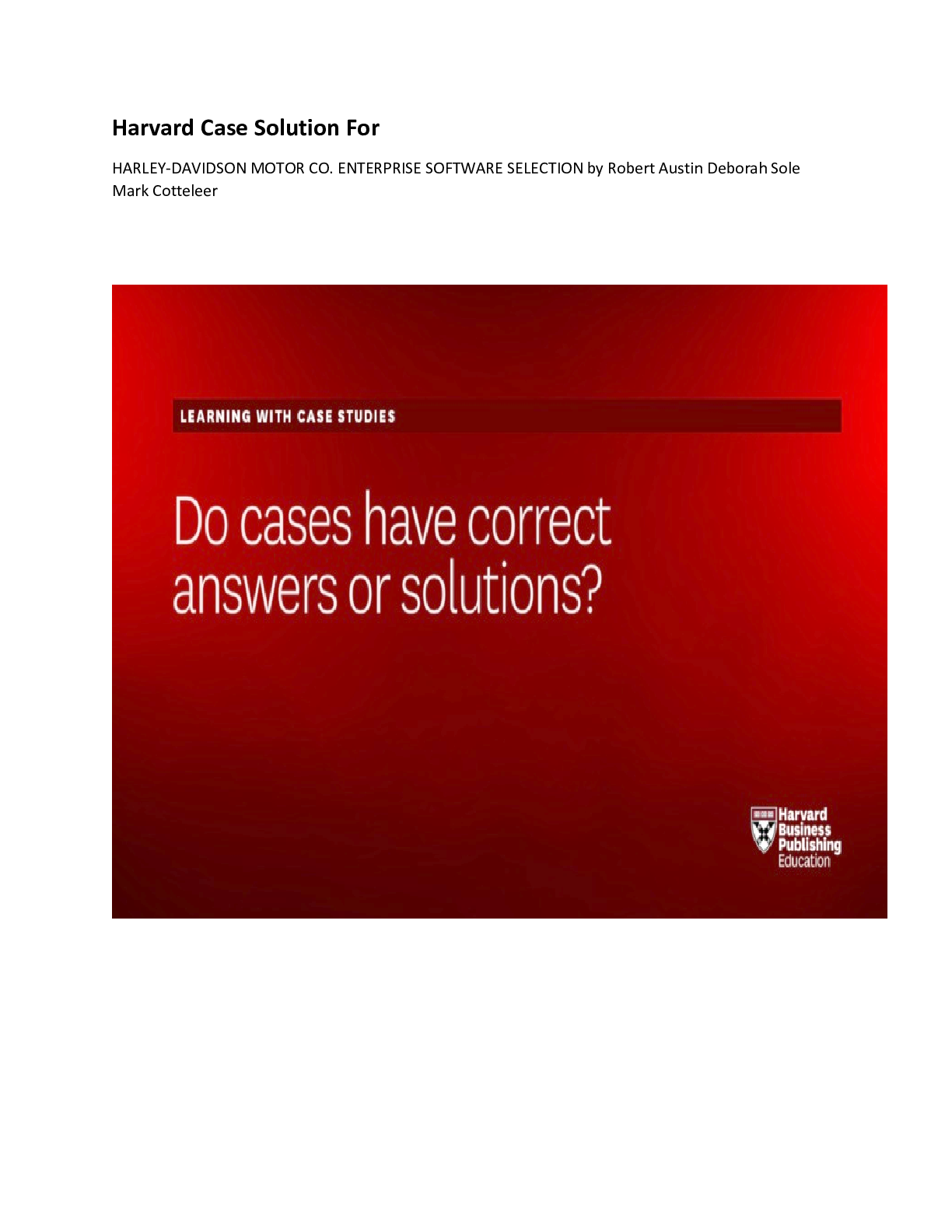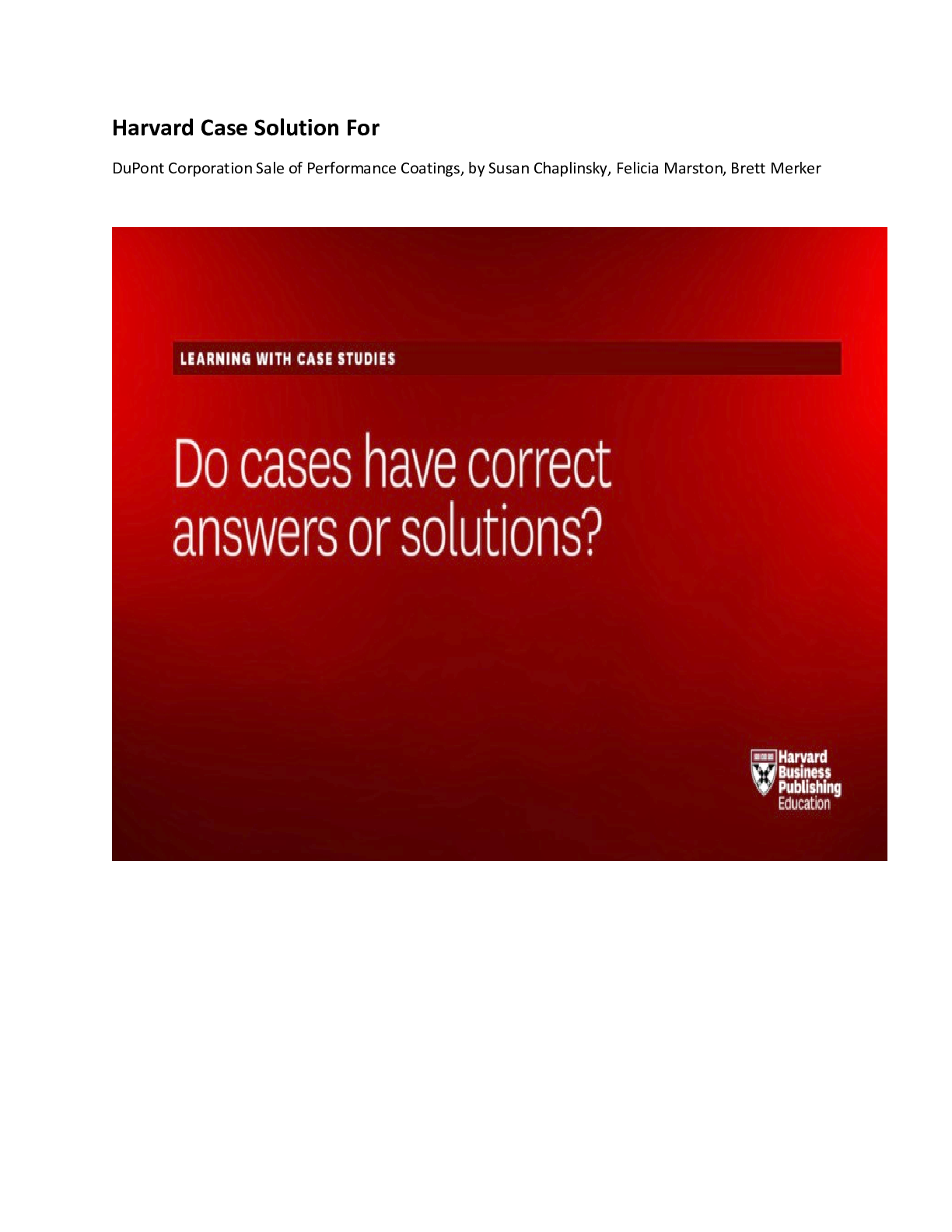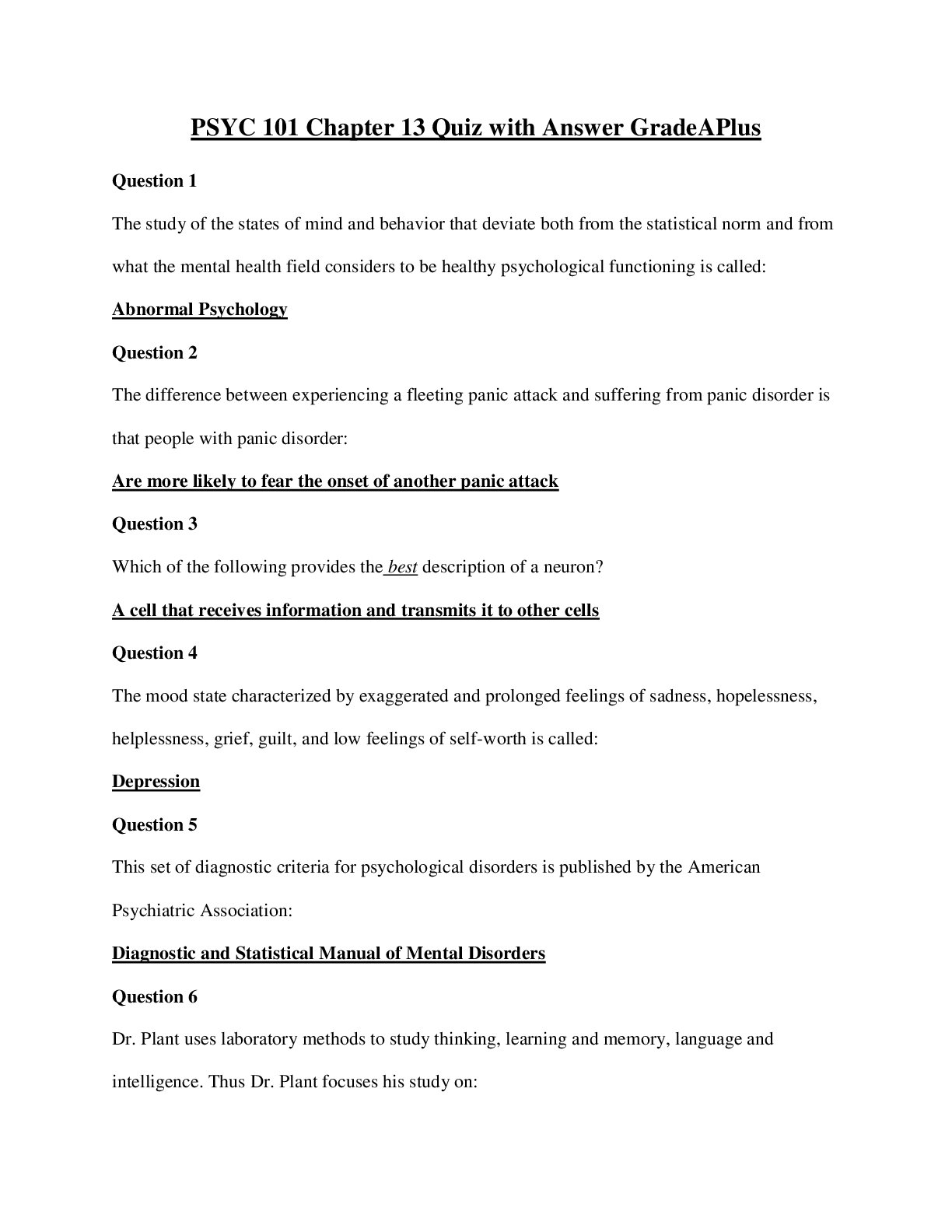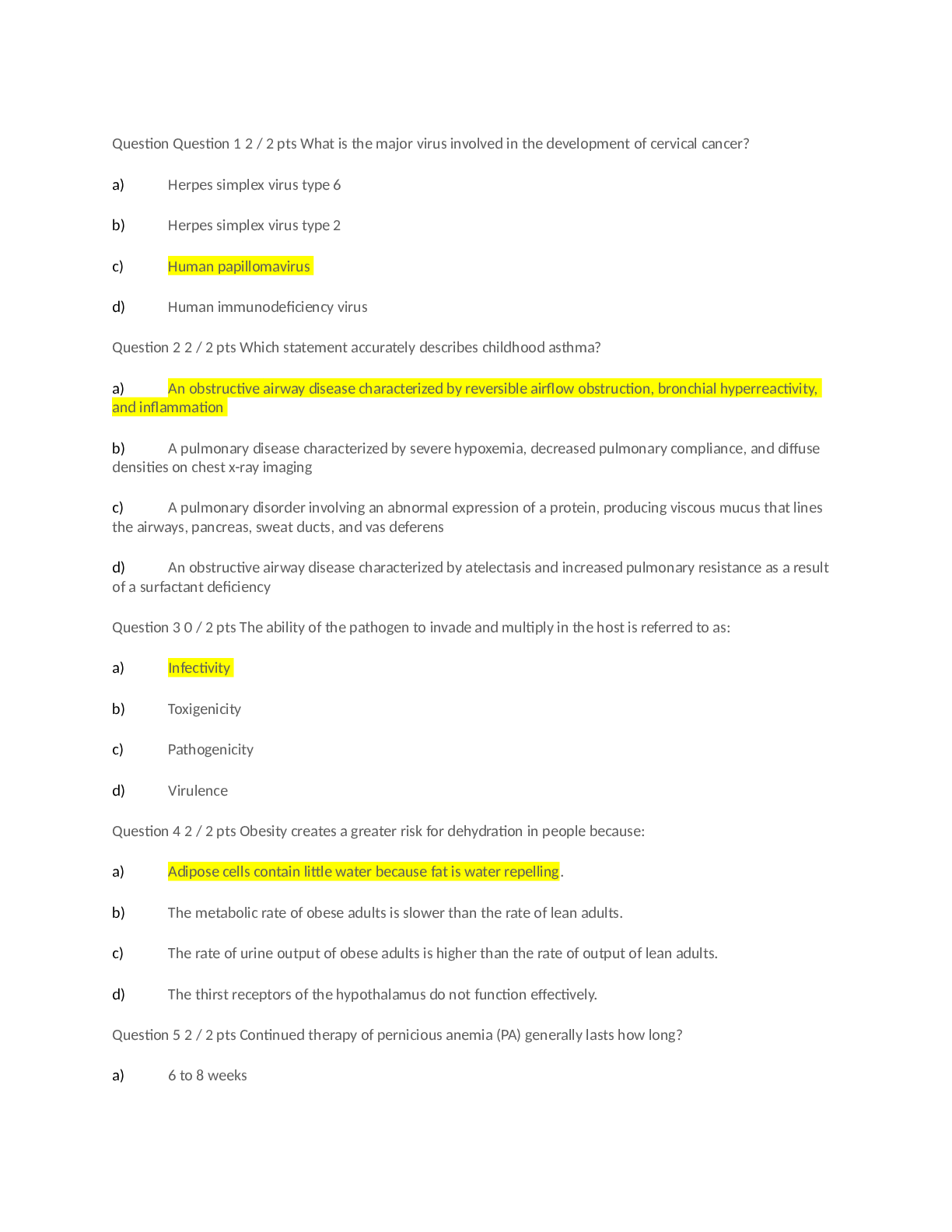NR 101 CHAPTER 13 QUIZ | VERIFIED ANSWERS
Document Content and Description Below
NR 101 CHAPTER 13 QUIZ 1) How are prions different from all other known infectious agents? A) They act as slow viruses. B) They cannot reproduce outside a cell. C) They can be destroyed by incine... ration. D) They lack nucleic acid. E) They cause neurological problems. 2) Which of the following types of animal virus requires RNA-dependent RNA transcriptase to be replicated? A) -ssRNA viruses B) +ssRNA viruses C) dsDNA viruses D) ssDNA viruses E) retroviruses 3) During ________, viruses remain dormant in animal cells. A) lytic replication B) budding C) persistent infection D) oncogenesis E) latency 4) Which of the following is matched INCORRECTLY? A) herpesvirus; endocytosis B) HIV; membrane fusion C) poliovirus; direct penetration D) measles virus; membrane fusion E) adenovirus; membrane fusion 5) The genome of which of the following types of animal virus can act directly as mRNA? A) -ssRNA viruses B) ssDNA viruses C) dsRNA viruses D) retroviruses E) +ssRNA viruses 6) Viruses are shed slowly and steadily during A) oncogenesis. B) latency. C) lytic replication. D) lysogenic infection. E) budding. 7) Which of the following may occur in a lysogenic infection, but not a latent one? A) The viral DNA integrates (inserts) into the host cell DNA. B) The prophage/provirus alters gene expression in the host cell. C) The inserted viral DNA may leave the host DNA. D) The provirus/prophage directs the synthesis of viral proteins. E) The prophage/provirus is replicated with the host DNA. 8) Which of the following is primarily responsible for the shape of a virion? A) the type of nucleic acid B) the number of segments of the viral genome C) the specific host protein the virus targets D) the capsid E) the source of the envelope 9) A ________ is a mass of neoplastic cells. A) gall B) diploid culture C) tumor D) plaque E) metastasis 10) Which of the following places stages of a lytic replication cycle in order, from earliest to latest stages? I. Synthesis II. Assembly III. Attachment IV. Release V. Entry A) I, III, V, II, IV B) I, II, III, V, IV C) III, II, V, I, IV D) III, V, I, II, IV E) V, III, II, IV, I 11) Which of the following is a feature shared by viruses and living organisms? A) presence of cytoplasm B) possession of a genome that directs synthesis of materials necessary for replication C) the ability to increase in size D) responsiveness E) metabolic capability 12) How are fungal viruses different from viruses that infect other organisms? A) They have no extracellular state. B) They cannot pass through a filter. C) They have no intracellular state. D) They have no capsid. E) They have only DNA for genetic material. 13) Zones of clearing in cell cultures that are the result of virus infection are called plaques. Sometimes "cloudy plaques" are seen on bacterial cultures infected with bacteriophage. What type of viral infection might cause this appearance? A) lysogenic B) lytic C) viroid D) transducing E) prion 14) In contrast to most dsDNA animal viruses, the poxviruses replicate solely in the cytoplasm of the host cell. This fact implies that the viral genome may encode A) reverse transcriptase and RNA-dependent RNA transcriptase. B) reverse transcriptase. C) ribosome components. D) RNA-dependent RNA transcriptase. E) a DNA polymerase. 15) Why is lysogeny advantageous to a bacteriophage? A) It speeds up the viral infection cycle. B) The genetic material of the bacteriophage is amplified many times over that seen in a lytic phage. C) It enables the bacteriophage to take over the cell. D) It allows the bacteriophage to infect cells it would not normally infect. E) It allows the bacteriophage to destroy the host cell's DNA. 16) Which of the following is associated with the attachment of a bacteriophage to a bacterial cell? A) chemical attractions B) random collisions C) receptor specificity D) both chemical attractions and receptor specificity E) random collisions, chemical attractions, and receptor specificity 17) Which of the following membranes can give rise to a viral envelope? A) the nuclear membrane B) the endoplasmic reticulum C) the nuclear and cytoplasmic membranes D) the nuclear and cytoplasmic membranes and the endoplasmic reticulum E) the cytoplasmic membrane 18) A lipid membrane is present in which of the following? A) prions B) enveloped viruses C) naked viruses D) viroids E) both prions and viroids 19) Which of the following statements regarding virus taxonomy is true? A) Some virus family names are derived from the name of an important member of the family. B) Virus classes are based on the domain of the host organism. C) Virus classes are well established. D) Viruses are classified on the basis of the taxonomy of their host organisms. E) The species epithet is a Latin descriptor of the virion structure. 20) Diploid cell cultures and continuous cell cultures differ in which of the following ways? A) convenience of use B) source of cells C) longevity D) both longevity and convenience of use E) both longevity and source of cells 21) Double-stranded RNA genomes can be found A) only in cells. B) in both prions and viruses. C) only in viruses. D) in both cells and viruses. E) only in prions. 22) Some human viruses are difficult to study because A) they establish latent infections and cannot be induced. B) the growth medium for the host cells is complex. C) they grow very slowly. D) very few laboratories have the skills to culture the viruses. E) they only grow in normal human cells. 23) Which of the following infectious particles do NOT have protein in their structure? A) prions B) animal viruses C) bacteriophages D) viroids E) both prions and viroids 24) Plaque assays are used for A) cultivating viruses that cannot be grown any other way. B) counting the number of latent phages in a cell. C) evaluating the cancer-causing ability of a virus. D) determine the density of phage in a culture. E) the study of prions. 25) The outermost layer of a virion fulfills which of the following functions of the virus? A) replication B) recognition C) protection D) both protection and recognition E) both recognition and replication 26) Which means of entry into host cells is common to both some animal viruses and bacteriophage T4? A) direct penetration B) membrane fusion C) endocytosis D) both endocytosis and direct penetration E) endocytosis, direct penetration, and membrane fusion 27) How is the HIV provirus different from a lambda-phage prophage? A) Lambda phage-infected cells produce virus slowly over time. B) All the offspring of a cell infected with a prophage will contain the virus. C) The HIV provirus is integrated permanently into the host cell's DNA. D) The HIV provirus is inactive inside the host cell. E) All subsequent generations of HIV-infected cells carry the provirus. 28) In what ways do viruses differ from other pathogens? A) Viruses are composed of both protein and lipid. B) Viruses have no protein structure. C) Viruses are composed of protein only. D) Viruses lack genetic material. E) Viruses lack cytoplasm and organelles. 29) Which of the following is a characteristic by which viruses are classified? A) type of life cycle B) type of nucleic acid C) size D) number of chromosomes E) type of host 30) The enzyme lysozyme is critical for which of the stages of a bacteriophage T4 infection cycle? A) assembly B) entry C) entry and release D) synthesis E) attachment 31) The process known as ________ is a mechanism of release for enveloped viruses. A) lytic replication B) latency C) metastasis D) persistent infection E) budding 32) A(n) ________ is a virus that infects bacterial cells. A) nucleocapsid B) prion C) bacteriophage D) virion E) envelope 33) Viroids infect A) plants. B) bacteria. C) fungi. D) plants and animals. E) all organisms. 34) Tumors invade other organs and tissues in a process called A) metastasis. B) budding. C) latency. D) neoplasia. E) a plaque assay. 35) The viruses of fungi have RNA genomes and lack a capsid. They are therefore similar to A) bacteriophages. B) lysogens. C) enveloped viruses. D) prions. E) viroids. 36) Reverse transcriptase is associated with which of the following? A) dsRNA viruses B) dsDNA viruses C) retroviruses D) +ssRNA viruses E) -ssRNA viruses 37) A cell is infected with a virus carrying an oncogene sequence in its genome. What process may occur if the oncogene is expressed in the infected cell? A) neoplasia B) latency C) lysogeny D) lysis E) both lysis and neoplasia 38) Which of the following agents is capable of inducing conversion of a prophage to the lytic cycle? A) UV light B) both UV light and X-rays C) X-rays D) both UV light and the presence of +ssRNA E) presence of +ssRNA 39) Small circular RNA molecules without capsids are characteristic of A) viroids. B) viruses. C) prions. D) plasmids. E) viruses and prions. 40) Which of the following statements comparing virus classification and taxonomy of organisms is true? A) Only families are common to both viral classification and organism taxonomy. B) Both viruses and organisms are organized into domains. C) Genus and specific epithet are used in both classification systems. D) Both viruses and organisms are organized into classes. E) The common names of viruses are their genus and species epithet, as they are with organisms. 41) One mechanism by which viruses may cause cancer is to interrupt the genetic regulatory sequences of repressor proteins. Which of the following types of viruses is most likely to be involved in causing cancer by this mechanism? A) +ssRNA viruses B) retroviruses C) both +ssRNA and -ssRNA viruses D) dsRNA viruses E) -ssRNA viruses 42) Which of the following events occurs in the lytic cycle of bacteriophage T4 infection but NOT in the lysogenic cycle? A) digestion of host DNA B) entry C) attachment D) viral protein synthesis E) both digestion of host DNA and viral proteins synthesis 43) Which of the following laboratory procedures is used for culturing animal viruses in the laboratory? A) both cell cultures and embryonated eggs B) broth cultures C) synthetic cytoplasm D) embryonated eggs E) cell cultures 44) Virus replication results in the death of the cell in ________ infection(s). A) a lysogenic B) a persistent C) a lytic D) a latent E) both latent and persistent 45) Host specificity of a virus is due to A) differences in size between the virus and the host cell. B) the presence of an envelope. C) interactions between viral and cellular surface molecules. D) particular genes that it shares with the infected cell. E) the presence or absence of a cell wall on the host cell. [Show More]
Last updated: 2 years ago
Preview 1 out of 9 pages

Buy this document to get the full access instantly
Instant Download Access after purchase
Buy NowInstant download
We Accept:

Reviews( 0 )
$12.00
Can't find what you want? Try our AI powered Search
Document information
Connected school, study & course
About the document
Uploaded On
Feb 08, 2021
Number of pages
9
Written in
Additional information
This document has been written for:
Uploaded
Feb 08, 2021
Downloads
0
Views
55


